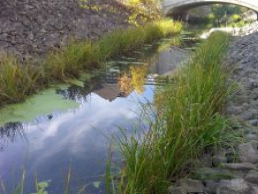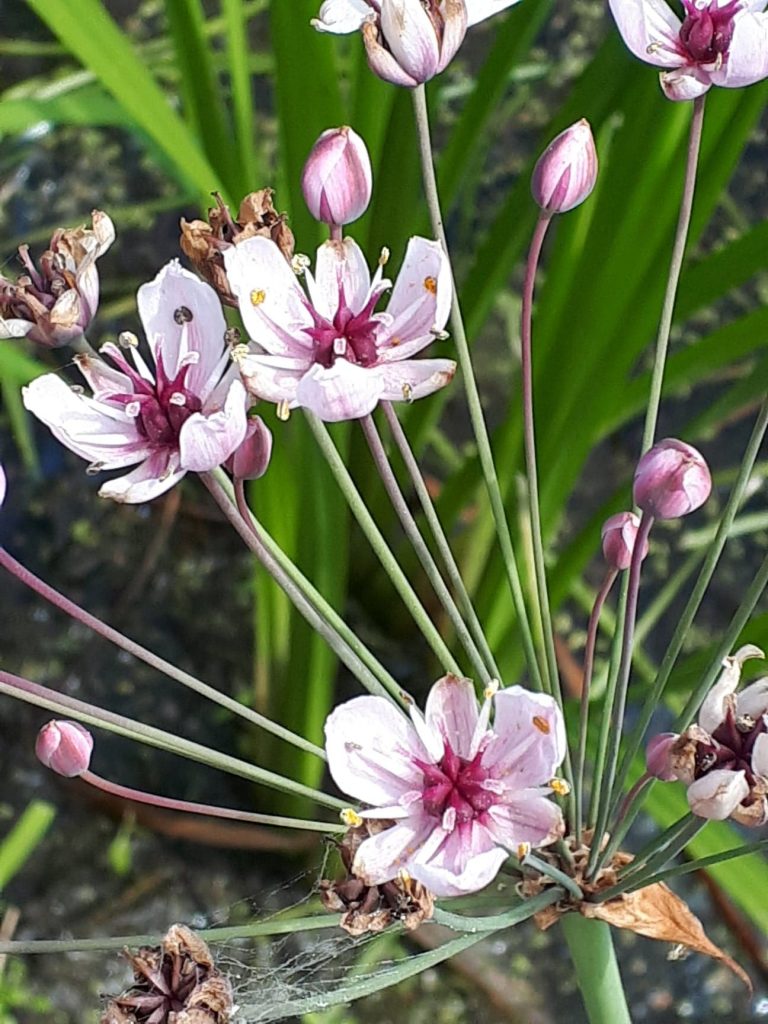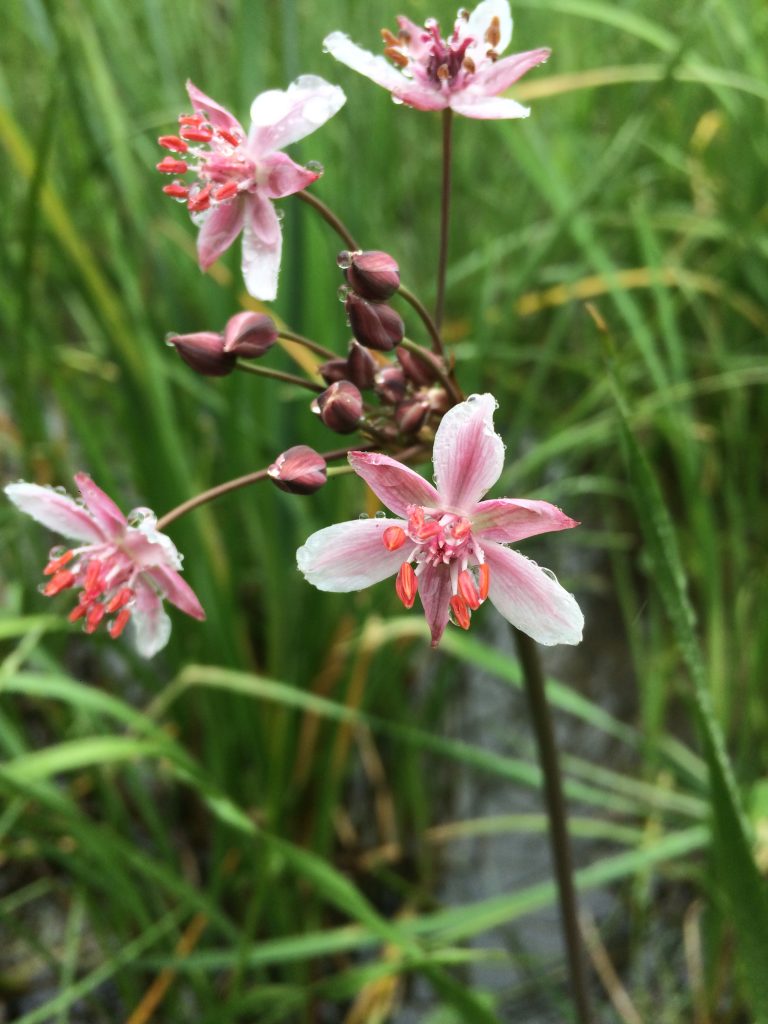
Flowering rush is a shore plant appreciated for its delicate and pretty inflorescence. It can be emerged or submerged in slow flowing streams. The flowering occurs at the end of summer, and it is difficult to notice the plant without the flowers through bur reeds (Sparganium sp.), rushes (Juncus sp. Schoenoplectus sp.) and cattails (Typha sp.).


This species was brought from Europe intentionally for water gardens and is nowadays a garden escape colonizing streams and ponds. The flowering rush is perennial and mostly undergoes vegetative reproduction through its rhizomes, creating large and dense colonies on shores. Once established, these colonies are extremely resistant and stable. They are aggressive competitors and will colonize sites in full sunlight, leaving limited space for other plant species.
Flowering rush also reproduces sexually and requires the help of pollinators to flower with viable seeds that may be transported downstream. As mentioned above, their rhizomes allow them to reproduce vegetatively but they also produce small bulbils which can detach and also be transported downstream and root elsewhere. These reproductive traits advantage greatly the establishment of flowering rush over other plant species.
Furthermore, in North America, there are two genotypes (same species but with different genetic signatures); one is diploid (2 pairs of chromosomes) and one is triploid (3 pairs of chromosomes). The diploid genotype reproduces both asexually (vegetatively) and sexually (through pollination) while the triploid genotype reproduces only mostly vegetatively. Perhaps there were distinct introduction episodes of this species in North America, thus allowing genetic divergence.
In Laval, you are likely to find flowering rush near streams, especially on sunny and disturbed banks.
Sources
Sentinelle – Quebec government (in French)



